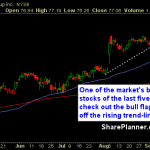The Labor Market Conditions Index (LMCI) is a relatively recent indicator developed by Federal Reserve economists to assess changes in the labor market conditions. It is a dynamic factor model of labor market indicators, essentially a diffusion index subject to extensive revisions based on nineteen underlying indicators in nine broad categories (see the table at the bottom for details). Yesterday’s release of the August data indicates expansion at 2.1. Positive revisions were made to the previous nine months, ranging from 0.1 in November to 0.7 in July. The latest number came in above the Investing.com forecast of 1.5.
The indicator, designed to illustrate expansion and contraction of labor market conditions, was initially announced in May 2014, but the data series was constructed back to August 1976. Here is a linear view of the complete LMCI. We’ve highlighted recessions with callouts for its value the month recessions begin and for the latest index value.

As we readily see, with the exception of the second half of the double-dip recession in the early 1980, sustained contractions in this indicator is a rather long leading indicator for recessions. It is more useful as a general gauge of employment health. Note that in the most recent FOMC minutes for the April 28-29, the phrase “labor market conditions” was used seven times. Maximum employment, after all, is one of the Fed’s mandates.
Interestingly enough, the May 2014 announcing the indicator doesn’t chart the complete series with monthly granularity. Instead, the authors use a column chart to show blocks of six-month averages for the two halves of each calendar year since 1977. This approach further supports the use of the indicator as a general gauge of health. Here is our larger version of the same graphic model.

We couldn’t resist the urge to create a chart of the more conventional six-month moving average of the indicator. Note that we’ve adjusted the vertical axis to capture the depth of the contraction during the last recession.














Leave A Comment